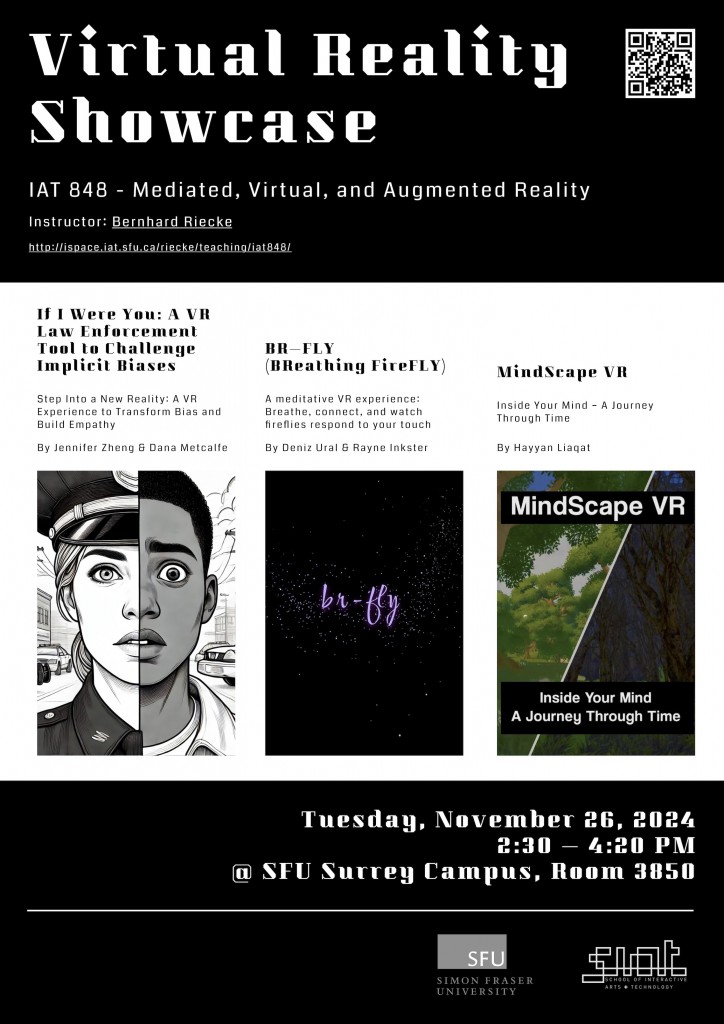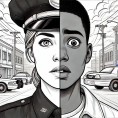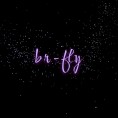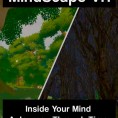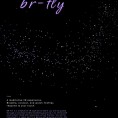This course is the Fall 2024 version of IAT 848 Mediated, Virtual, and Augmented Reality, taught by Dr. Bernhard Riecke at Simon Fraser University.
Showcase Invitation: Tuesday November 26th, from 2:30 - 4:20pm, in SRYC 3850 (aka black box).
Below is an impromptu showcase video that we created spontaneously during the showcase — with the design constraint of no scripting, storyboarding, rehearsal, or video editing (apart from one pausing) — just improvised. Enjoy:
Join us for an interactive showcase of intriguing VR projects created by students in IAT 848! Experience firsthand the power of virtual reality to educate, inspire, and promote positive change.
Date: Tuesday, November 26th, 2024
Time: 2:30 PM — 4:20 PM
Location: SRYC 3850 (Black Box), SFU Surrey campus (Central City Tower, Podium 3), see directions.
Featured Projects
- If I Were You: A VR law enforcement tool to challenge implicit biases and promote empathy.
- MindScape VR: A journey through time inside your mind, exploring the impact of lifestyle choices on brain health.
- BR-FLY: A meditative VR experience that guides users through a mindful breathing exercise.
No RSVP required — just drop by and explore the future of XR!
Each VR experience is approximately 4–6 minutes long.
SFU news story about our course and showcase:
About the Course
IAT 848 is a graduate-level course at Simon Fraser University that delves into the exciting world of extended reality (XR). Students in this course explore the design, development, and evaluation of immersive VR experiences, with a focus on creating positive social impact. Through hands-on research projects, students apply theoretical frameworks and user-centered design principles to develop innovative and transformative VR applications.
Project details:
If I Were You: A VR Law Enforcement Tool to Challenge Implicit Biases
Step Into a New Reality: A VR Experience to Transform Bias and Build Empathy
 Our VR experience allows users to enter an experience that creates an embodied, emotionally impactful perspective-taking opportunity that encourages empathy and self-reflection on biases in critical situations. This immersive experience addresses a gap in traditional training by fostering empathy and awareness of bias-driven errors, with the potential to improve policing outcomes and contribute to fairer treatment in law enforcement.
Our VR experience allows users to enter an experience that creates an embodied, emotionally impactful perspective-taking opportunity that encourages empathy and self-reflection on biases in critical situations. This immersive experience addresses a gap in traditional training by fostering empathy and awareness of bias-driven errors, with the potential to improve policing outcomes and contribute to fairer treatment in law enforcement.
Below is a recording of Dana and Jennifer’s final project presentation in class:
MindScape VR
Inside Your Mind – A Journey Through Time
Razor: Our VR experience will immerse users in a forest that reflects the health of their brain, revealing the profound and lasting consequences of their everyday lifestyle choices
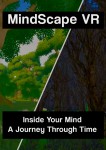 Step inside your mind and witness the impact your daily choices have on your brain in our immersive VR experience, MindScape. Explore the connections between your lifestyle and the vibrant neural landscapes that change in real time based on your decisions. Feel the weight of potential future outcomes—both hopeful and alarming—and discover that the path to brain health is within your control
Step inside your mind and witness the impact your daily choices have on your brain in our immersive VR experience, MindScape. Explore the connections between your lifestyle and the vibrant neural landscapes that change in real time based on your decisions. Feel the weight of potential future outcomes—both hopeful and alarming—and discover that the path to brain health is within your control
Below is a recording of Hayyan’s final project presentation in class:
BR-FLY (BReathing FireFLY)
A meditative VR experience: Breathe, connect, and watch fireflies respond to your touch
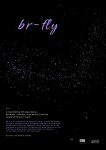 BR-FLY is a meditative VR experience where you will be guided through a narrated mindful breathing practice in an immersive environment filled with responsive virtual fireflies. You will be immersed in a space akin to a galaxy with glowing and star-like fireflies combined with a relaxing ambient soundscape, encouraging connection and awareness. The goal of the experience is to elevate awareness and cultivate a sense of belonging and well-being among users, such as visitors at an art gallery/exhibition space or VR users intrigued through the app store.
BR-FLY is a meditative VR experience where you will be guided through a narrated mindful breathing practice in an immersive environment filled with responsive virtual fireflies. You will be immersed in a space akin to a galaxy with glowing and star-like fireflies combined with a relaxing ambient soundscape, encouraging connection and awareness. The goal of the experience is to elevate awareness and cultivate a sense of belonging and well-being among users, such as visitors at an art gallery/exhibition space or VR users intrigued through the app store.
Below is a recording of Deniz and Rayne’s final project presentation in class:
Project posters
Course Details
Calendar Description:
Covers the emerging field of virtual, augmented, mediated, and mixed reality from human-centered, research, technical, and ethical perspectives. Discusses and analyzes design, development, usage, and evaluation of technologies that can be used to mediate human experience and interaction with virtual and real environments including Virtual, Augmented, and Mixed Realities (together known as XR). Investigates how these emerging technologies can affect and augment human perceptual, motor, cognitive and socio-emotional processes. Analyzes human-centered approaches to interaction with 3D real and virtual content, using visual, auditory, haptic, kinesthetic, physiological and neurophysiological modalities. Design guidelines and practices are covered throughout. Considers aesthetic, cultural and ethical implications of mediating reality.
Class location and times
Each week, starting Tuesday Sept 10th, we’ll be for the first 2 hours in the computer lab (that has VR capable computers) in case we need them, and then will move to another nearby seminar room for the last hour (as the computer lab wasn’t available for the whole 3 hours unfortunately):
Tuesday, 2:30pm-4:20pm, SRYC 3050
Tuesday, 4:30pm-5:20pm, SRYC 3120 (both on the SFU Surrey campus, main Surrey Central building, Galleria 3)
Course-level educational goals and desired learning outcomes
After successfully completing the course, students should be able to do the following
- Critically engage with, reflect, discuss, and analyze interactive VR/MR/AR (abbreviated as XR) experiences using and applying relevant scholarly frameworks, theories, and concepts
- Explain, evaluate, discuss current challenges of XR on the technical, ethical, perceptual, and user experience level
- Prepare a XR research proposal and evaluate its feasibility, including a clear motivation and argument for the gap in literature and current state of the art and and argument for its contribution
- Design and create a real-time immersive/XR experience that identifies the context of participants and stakeholders, and takes advantage of the potential of the technology. This includes being able to argue convincingly why it makes sense to use the chosen technology and its potential integration in larger systems.
- Being able to design, run, analyze and present user studies/evaluation/research of XR system/user experience/performance
Requirements / prerequisite
- Basic programming skills, as documented through IAT806 or equivalent demonstration or documentation of basic programming competency, or instructor permission.
- Basic research methods skills, as documented through having taking a graduate research methods course (e.g., IAT 801, 802, 803, 834), or instructor permission.
Teaching/learning activities include:
- Interactive lecturing and demonstrations, including flipped-classroom components (reading and video tutorials at home incentivized by assignments)
- Group discussions (in-class or online chat– and discussing forums)
- Regular reading, writing and/or revision/reviewing/feedback assignments
- Online and in-class tutorials on various topics ranging from conceptual to technical
- Group/individual research projects and presentations
Topics and Overview
As this field is rapidly evolving topics covered will evolve over time. Current topics include but are not limited to:
- Introduction into mediated, virtual and augmented realities:
- Overview, Background and Motivation
- Definitions
- History and development
- Different kinds of alternate realities
- Presence, immersion, and reference frames
- Overview of technologies
- Hardware, software, interfaces,
- How to move through alternate realities
- How to interact with alternate realities
- Designing for human capabilities:
- Perceptual, cognitive, sensorial & physiological modalities
- The human in multiple realities
- What can go wrong: Adverse side effects
- From motion sickness to disorientation, strain, usability, and practical challenges
- Design guidelines
- Closing the action-perception loop: Interaction and feedback
- The human in the loop
- Input, output, and what happens in between
- Interaction paradigms
- How to design alternate realities and MR/VR/AR content
- Principles for designing for alternate realities
- Determining context: e.g., training, learning, exploring, gaming, storytelling/narratives, socially interacting (synchronously & asynchronously), visualizing data & sensemaking
- Iterative design and evaluation
- Co-creating with Participants, Stakeholders, Communities
- Intertwining technology, aesthetics (look & feel) & interaction
- Assessing content & context: accounting for use scenarios in specific contexts; siting: access, sustainability/longitudinal use, fit with institutional, social contexts, needs & expectations; accounting for longitudinal use: upgrades, technical support; evolution of use
- Innovation, entrepreneurial considerations
- User interface guidelines for alternate realities
- User studies in alternate realities
- Implications, potentials and challenges in designing alternate realities
- Scientific, health, and technological aspects
- What should or should we not design? Social, societal, cultural, and ethical perspectives
- Artistic, aesthetic & narrative perspectives
- Responsibility, ethics, and the future of alternate realities
Current research topics and challenges as well as design guidelines and practices will be covered throughout the course and above topics.
Examples of prior students' VR/XR projects from Bernhard's classes:
Grad/undergrad mixed:
UBISS Summerschool 2024 1-week intensive VR Workshop/Jam “Virtually Real? The Art and Science of Designing Impactful (or Even Transformative?) Virtual Experiences”
Undergrad classes
Semester in Alternate Realities
IAT 445: Immersive Environments
Resources
[excerpt, see Canvas course resources page for more details]
Unity & VR
if you don’t have a strong background in programming or VR development already, I’d suggest to go through some basic Unity tutorials. It’ll be useful to have at least a basic understanding of these areas for the course projects. Prior students have found the following tutorials quite useful:
- https://learn.unity.com/pathway/unity-essentials - lots of basic skills, pick and try out at least the basics until you can create basic VR/XR projects
- https://learn.unity.com/pathway/vr-development - probably the most relevant once you are comfortable w/ basic Unity things [optional if you’d like to go deeper]
Quantitative research methods
see my IAT 802 Quantitative Research Methods and Design tutorials/guidelines
